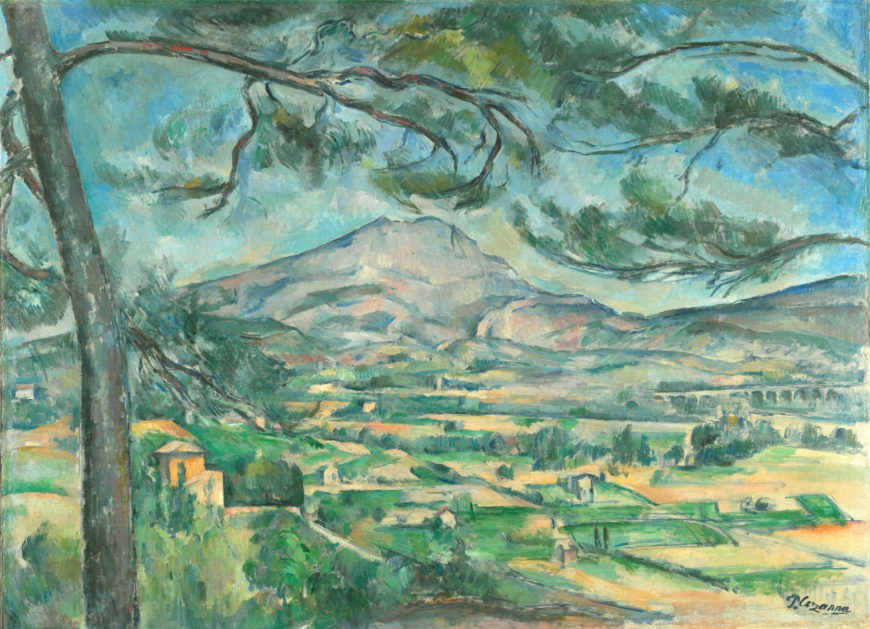
Paul Cézanne, Still Life with Apples, 1895-98, oil on canvas, 68.6 x 92.7 cm (The Museum of Modern Art, New York)
Categorizing the style of Paul Cézanne’s (Say-zahn) artwork is problematic. As a young man he left his home in Provence in the south of France in order to join with the avant-garde in Paris. He was successful, too. He fell in with the circle of young painters that surrounded Manet, he had been a childhood friend of the novelist, Emile Zola, who championed Manet, and he even showed at the first Impressionist exhibition, held at Nadar’s studio in 1874.

Paul Cézanne, Paul Alexis reading to Émile Zola, 1869-1870, oil on canvas (São Paulo Museum of Art)
Out of place in Paris
However, Cézanne didn’t quite fit in with the group. Whereas many other painters in this circle were concerned primarily with the effects of light and reflected color, Cézanne remained deeply committed to form. Feeling out of place in Paris, he left after a relatively short period and returned to his home in Aix-en-Provence. He would remain in his native Provence for most of the rest of his life. He worked in the semi-isolation afforded by the country, but was never really out of touch with the breakthroughs of the avant-garde.

Paul Cézanne, Madame Cézanne (Hortense Fiquet, 1850–1922) in a Red Dress, 1888-90, oil on canvas, 116.5 x 89.5 cm (The Metropolitan Museum of Art, New York)
Working outdoors, but with a different purpose
Like the Impressionists, he often worked outdoors directly before his subjects. But unlike the Impressionists, Cézanne used color, not as an end in itself, but rather like line, as a tool with which to construct form and space. Ironically, it is the Parisian avant-garde that would eventually seek him out. In the first years of the 20th century, just at the end of Cézanne’s life, young artists would make a pilgrimage to Aix, to see the man who would change painting.

Paul Cézanne, Mont Sainte-Victoire with Large Pine, c. 1887, oil on canvas, 66.8 x 92.3 cm (The Courtauld Gallery, London)
Influence
Paul Cézanne is often considered to be one of the most influential painter of the late 19th century. Pablo Picasso readily admitted his great debt to the elder master. Similarly, Henri Matisse once called Cézanne, “…the father of us all.” For many years The Museum of Modern Art in New York organized its permanent collection so as to begin with an entire room devoted to Cézanne’s painting. The Metropolitan Museum of Art also gives over an entire large room to him. Clearly, many artists and curators consider him enormously important.
Additional resources:
Cézanne’s Still Life with Apples at the MoMA
Biography of the artist from Grove Art on MoMA.org
Meyer Shapiro on Cézanne from Artchive
Smarthistory images for teaching and learning:
[flickr_tags user_id=”82032880@N00″ tags=”CezanneIntro,”]

